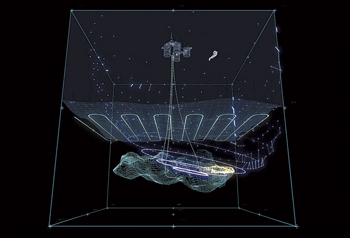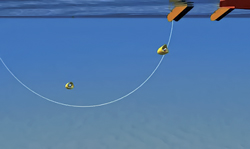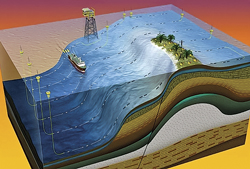|
With the ability to produce full-wave, high-resolution imaging, seabed seismic programs are becoming the go-to technology for obscure and challenging subsea environments. Last November, CGG Veritas and Saudi Aramco announced a new venture, named SpiceRack, which will pair up seabed seismic with a unique robotic acquisition system, the first of its kind in the world.
 |
Statoil hopes to recover an additional 30 MMbbl from Snorre and Grane fields, using permanent reservoir monitoring. Photo courtesy of Statoil.
|
|
In July 2012, five months earlier, CGGVeritas and Saudi Aramco signed an agreement to collaborate on the development of acquisition, processing, analysis and interpretation technologies. While CGGVeritas and Saudi Aramco have been partners for over 40 years, this project marks the first R&D initiative between the two companies.
The word ‘initiative,’ however, does not fully convey the scope of SpiceRack. The partners are employing the know-how of over 550 geophysical R&D specialists around the globe, to develop next-generation seismic technologies, such as SpiceRack.
Based on a series of self-propelled recording nodes, SpiceRack aims to produce high-quality seismic data with a quick turnaround time, all while operating with fully automated technology. Whereas traditional offshore seismic acquisition involves streaming air guns and receivers towed behind a vessel, autonomous receivers that sit on the seabed create much more detailed and accurate data, producing a clearer image. This system also allows for seismic monitoring over time, allowing engineers to better understand long-term changes in reservoirs.
Deeper, hotter, more remote and challenging environments, such as those of the ultra-deep pre-salt waters or Arctic regions, are creating a market for this type of technology, which also could be safer than conventional offshore seismic.
 |
Shell is testing a new seabed acquisition program that employs autonomous robots equipped with GPS navigation. Photo courtesy of Shell.
|
|
Over the last few years, Shell has been working on developing satellite navigation-equipped, remote seabed seismic receivers that it is testing. Around 2,000 nodes could be sent out per day with the system, with several thousand sq km surveyed each day, even beneath ice.
In 2012, ION Geophysical announced the launch of its latest re-deployable seabed acquisition system, Calypso, capable of operating in water depths of 5 to 2,000 m, twice that of its predecessor. Tilt-insensitive multicomponent sensors record seismic data at richer low- and high-frequency content.
On the production side, Statoil recently announced plans to use permanent reservoir monitoring (PRM) to study the Norwegian shelf’s Snorre and Grane field reservoirs—the largest reservoir monitoring job in the world. By laying down 700 km of seismic cables on the seabed above these fields, Statoil is hoping to gain the high-quality imaging that will result in 30 million new bbl of oil being extracted. To collect the data, the cables will register with a vessel above the field to transmit data.
 |
ION Geophysical’s buoy-based recording eliminates the need for a dedicated recording vessel. Photo courtesy of ION Geophysical.
|
|
CGGVeritas and Saudi Aramco plan to develop, manufacture and commercialize all components of the SpiceRack technology, with further details to be released later this year. In addition to launching the SpiceRack project, CGGVeritas has announced plans to collaborate with Saudi Arabia’s King Fahd University of Petroleum and Minerals. The company also plans to open a Center of Excellence for Automation in Geophysical Acquisition with ARGAS, its Saudi joint venture with TAQA, in the Dhahran Techno Valley.
While it will be several years before the SpiceRack system will be ready to go to market, the idea of droid-driven seismic acquisition and monitoring will certainly stay at the forefront of geophysical news. Who knows: maybe George Lucas will create a special cameo for deepwater R2D2 in one of Disney’s next Star Wars thrillers. 
|






